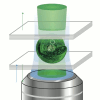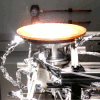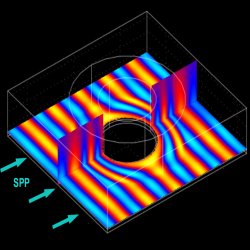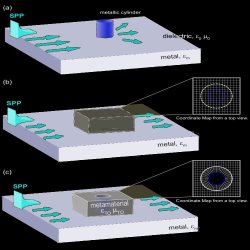-
Viewpoint on 'IONS'
Viewpoint on 'Scientific Literacy'
- Proudly sponsored by
-


-
Bionic Lasers

In the dawn of the third Millennium, lasers are fast becoming man’s best friend. Be that as it may, the world still perceives them as cold, lifeless devices. Can that image be shaken off, or even turned around? Can lasers be perceived as something that is, on the contrary, warm and full of life?
-
Darkness Amplification by Stimulated Absorption of Radiation, No Kidding!

The anti-laser concept was a joke in the 1960s, but recent research shows how interesting physics does lie within this concept.
-
Solar Fuel: No More Drilling!

The Earth’s reserve of fossil fuels is limited, and their production and use pollute our environment. Solar collectors offer a possible solution to the increasingly pressing demands for economically and environmentally sustainable energy.
Plasmons: Transform!
Latest experiments demonstrate an easy way to freely transform electromagnetic waves moving on metals. This yields promise of powerful applications, ranging from computers and biomedical devices, to solar cells and cell phones.
Cylindrical invisibility cloak in action. 3D view of the z-component of the electric field associated with a surface plasmon at a wavelength 600nm propagating along a 50nm-high gold film and through an invisibility cloak that surrounds a metallic cylinder. The surface plasmon continues to propagate without any distortion in the field profile.
There are many different types of waves in nature. For example, there are waves that freely propagate in space, such as sound waves, and waves which are bound to a surface, such as the water waves which occur at the interface between water and air.

Cylindrical invisibility cloak design. (a) A surface plasmon-polariton (SPP) propagates along a metal-dielectric interface and scatters when it encounters a metallic cylinder. (b) Transformation optics is used to design a device capable of guiding the SPP around the cylinder. (c) This generates an invisibility cloak surrounding the metallic cylinder so that the SPP is smoothly guided around it.
In order to get the most out of an electromagnetic wave it is essential to be able to manipulate it. Transformation optics is a mathematical technique that does exactly this. The idea in a nutshell is to force light to follow a desired path by modifying the electromagnetic properties of the medium in which it is moving. For example, with this technique it is possible, in some scenarios, to conceal an object that is, physically, right before us, thus making it invisible. However, transformation optics has so far only been applied to free propagating waves.
In the case of surface plasmons, which propagate at the interface between two media, the modification should happen in both the metal and the dielectric. However, the subwavelength control on the metal properties required for the practical implementation of the prescriptions of transformation optics is beyond current fabrication capabilities. This has been a major obstacle. Francisco Javier García Vidal from the Universidad Autónoma de Madrid and his colleagues have now succeeded in finding a solution: optimal control on the surface plasmons can be achieved only by manipulating the dielectric, thus making the task a lot easier from a practical point of view.
The new approach is simple and robust enough to be used for technological applications while still remaining a very general tool. "In contrast to the other approaches," García Vidal explains, "we introduce a technique that can be used for any specific purpose." For example, several groups are currently working on applications on sensors, solar cells and photonic circuits. "One of the devices we are working on," García Vidal says, "is a concentrator for surface plasmons. The idea is to concentrate all the energy carried by a 2D surface plasmon into a very tiny spot. This could be, for example, used for sensing (chemical or biological) applications."
The biggest advantage, says Stefan Maier at Imperial College London, is that this provides us with a general tool with which to modify surface plasmon propagation according to our needs, only requiring modifications in the sole dielectric, since the manipulation of the metal will only make sense when we have better metals, meaning metals that do not attenuate the signal very strongly. "Numerous applications," continues Maier, "could benefit from devices conceived and experimentally realized using the method suggested by García Vidal and colleagues in their paper."
Giorgio Adamo
2010 © Optics & Photonics Focus
GA is a PhD student with the Optoelectronics Research Centre at the University of Southampton (UK).

Paloma A. Huidobro, Maxim L. Nesterov, Luis Martín-Moreno & Francisco J. García-Vidal, Transformation Optics for Plasmonics, Nanoletters (2010) 10, 1985–1990 (link).